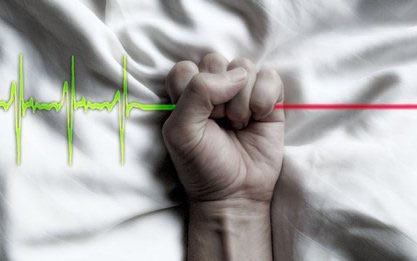
Voluntary euthanasia bill to be debated. Again…
On 8 June 2017, ACT MP David Seymour’s private members’ bill was pulled from the ballot, starting the latest round of the euthanasia debate. It seems like only yesterday, that a bill to legalise voluntary euthanasia was withdrawn amid fears it would become a political football during an election year. Hang on, it’s an election year again!
What’s the difference between Euthanasia and Assisted Suicide?
Euthanasia is an intervention undertaken with the intention of ending a life to relieve suffering, for example, a lethal injection administered by a doctor
Assisted suicide is any act that intentionally helps another person kill themselves, for example by providing them with the means to do so, most commonly by prescribing a lethal medication
When David Seymour’s bill was drawn, National and Whanganui MP Chester Borrows said he was firmly against it [the bill].
We have a horrific record on suicide and I think it sends a message that sometimes it is okay to top yourself. And I disagree with that.
Economic Development Minister Simon Bridges said he was likely to vote against it, but may vote for it to go to a select committee so it could be properly debated. “Ultimately life is sacred and I think there are … ‘thin edge of the wedge’ arguments that concern me.”
What will that debate look like? The world has progressed since Maryan Street’s ‘End-of-Life Choice Bill’ was dropped. Views have changed and euthanasia laws in other countries have evolved over the past four years. Here’s a quick look at recent articles in the media if you want to consider the trajectory euthanasia laws have taken.
- A Dutch euthanasia pioneer surveys the wreckage and despairs Safeguards for the mentally ill and the demented are slipping away
- ‘Existential distress’, not pain, drives euthanasia Euthanasia victims in Canada tend to be white and relatively affluent
- Netherlands sees sharp increase in people choosing euthanasia due to ‘mental health problems’
- Man in the Netherlands euthanised due to his alcohol addiction Euthanasia for people in ‘unbearable suffering’ and no prospect of improvement is legal in the country
- At last, American psychiatrists speak out on euthanasia “… given the potential slippery slope in this area, the APA statement lays down an important marker for the future”
- Belgian Catholic psychiatric hospitals ‘adjust’ their view of euthanasia From now on it will be difficult to find a psychiatric hospital where euthanasia is not offered
- Number of official cases of euthanasia rise 10% in the Netherlands A brief overview of lives taken last year.
- Belgium minor first to be granted euthanasia
- Euthanasia is a ‘sideshow’ in end-of-life care, says leading US bioethicistEzekiel Emanuel says that pain is not the the reason people ask doctors to end their lives
- Elder abuse is a clear and present danger in the euthanasia debateAn Australian report underscores the seriousness of the problem
- Do suicides increase where euthanasia is legal? The statistics suggest that the answer is yes
- Are there ‘good suicides’ and ‘bad suicides’? Or are all of them bad?An elderly Australian couple says that euthanasia is better than life in a nursing home
- As demographic winter sets in, the world will need far more palliative care A British study shows that the world is far from prepared
- What’s wrong with prisoner euthanasia? A US law journal investigates “the last frontier in prison reform”
Did you read the first article in the list? Here are are some of the key points that need highlighting:
The Dutch are complacent about their famous law, he says. But there is no room for complacency. Under current legislation, euthanasia is only legal if a doctor believes that three conditions have been met: (1) the request must be voluntary and deliberate; (2) there must be unbearable suffering with no hope of improvement; and (3) there must no reasonable alternative to euthanasia. However, as euthanasia has sunk its roots deeper and deeper into Dutch medicine, the second and third conditions have shrivelled up. Patients define what is unbearable and they define what is a reasonable alternative. Unhappiness can be unbearable and a nursing home may not be a reasonable alternative. So, as one ethicist has observed, requirements (2) and (3) “add little to the requirement of a voluntary and thoughtful request”. Autonomy has trumped medicine. As a result, the number of euthanasia cases roughly tripled between 2007 and 2016, from 2000 to 6000.
One sign of the changing times is the rapid expansion of the services of the End of Life Clinic Foundation (Stichting Levenseindekliniek). This organisation offers euthanasia to patients whose own doctors have refused. They never offer to treat the underlying illness, whether it is physical or mental.
Last year, Dr Chabot points out, doctors from the End of Life Clinic each performed about one euthanasia every month. “What happens to doctors for whom a deadly injection becomes a monthly routine?” he asks. Now the End of Life Clinic is recruiting psychiatrists to service the mentally ill and demented. One obvious problem is that there is a shortage of good psychiatric help in the Netherland – which tends to take a long time have an effect, in any case – because of budget cuts.
Dr Chabot is deeply sceptical about euthanasia for the demented: “we are dealing with a morally problematic act: how do you kill someone who does not understand that he will be killed?”
How? It turns out that sometimes a relative or doctor secretly laces their food or drink with a sedative to make it easier to give them a lethal injection. In one notorious case last year, the sedative didn’t work and relatives pinned the terrified woman to the bed while the doctor gave the lethal injection. Dr Chabot was astonished to discover that “surreptitious administration of medication has previously occurred, but has never been mentioned in an annual report.”
Isn’t anyone paying attention to these developments, Dr Chabot asks.
While researching this topic, I realised that only western countries seem to face this issue. Why is that? http://www.scielo.br/pdf/bioet/v24n2/en_1983-8034-bioet-24-2-0355.pdf
What’s the real problem?
Euthanasia is presented as a solution for those who are suffering unbearable pain, by allowing them to exercise their right to take their own life and not be forced to live with their current or progressing condition.
Is depression a medical condition?
Here’s what the New Zealand Ministry of Health says,
Depression is a mental illness.. [it] can range from being a mild illness, to a severe one – where you can lose interest in life and the things you used to enjoy.
Some of the signs of depression:
- feeling tired all the time
- getting too much sleep or not enough
- feeling worthless and helpless
- thinking about death a lot
- having no energy and feelings of low self-esteem
- loss of appetite or overeating
- sadness or emotional ‘numbness’
- loss of pleasure in everyday activities
- irritability or anxiety
- poor concentration
- feeling guilty, or crying for no apparent reason.
Source: depression.org.nz
Do we condone suicide in New Zealand?
No. We actively campaign against it.
- Ministry of Health
- Mental Health Foundation
- Lifeline
- Ministry of Social Development
- Ministry of Education
- Health Navigator New Zealand
Suicidal thoughts are a key symptom of depression.
What’s Euthanasia?
Asking someone else [a physician] to intervene and take your life because you are unable to do so yourself.
“… a rose. By any other name, would smell as sweet.”
~ Romeo and Juliet, Act II Scene II
Are there other solutions to this problem?
We need to stop victimising people facing ‘unbearable pain’ or ‘extenuating circumstances’ and reach out in love.
Think differently. Look for alternative solutions and, if you can’t find one, make one!
Did you catch the story in Stuff that came out the day after the bill was pulled from the ballot?
Husband’s ingenious solution to his wife’s loss of mobility

“There was a time when visitors would come for miles just to chat with Avis Darnley.
But as Parkinson’s disease has melted away the muscles in her jaw and throat, left her in a wheelchair and stolen her ability to speak, life has got smaller.
Most days she was left with just her front room, her television, and husband John.
Until John decided it was time they both got on with living.”
John and Avis Darnley’s story demonstrates that there can be creative solutions to improving one’s quality of life.
Here’s another article, this time from the USA, about a man who takes an unconventional approach by taking care for his elderly neighbour. Their story reminds me of ‘the good Samaritan’. California Man Cares for Ailing 89-Year-Old Neighbour and Best Friend in Her Final Days: ‘Kindness Heals’.
Hospice New Zealand have a lot to say on this issue.
Hospice New Zealand does not support a change in the law to legalise assisted dying in any form. Nor do we consider that a change in the law would be in the best interests of the people we care for.
We believe Government should be investing in palliative care, increasing access to care and support not legalising euthanasia. Only when all New Zealanders have ready access to expert end-of-life care can a balanced debate begin. We support that all New Zealanders have the right to choose where they die.
The Nathaniel Centre played an instrumental role in the previous attempt to legalise Euthanasia in New Zealand.
It goes without saying that Family First will play a very public role in this debate, and that Maxim Institute to provide well-researched information for the country to consider.
I’ll close with a final thought by Maxim’s CEO Alen Penk,
David Seymour’s private member’s bill is based on an illusion. It assumes that it’s possible to create safeguards around assisted suicide practices that can prevent wrongful deaths. However, international evidence has shown that there is no reliably safe way to legalise euthanasia or assisted suicide.
Need more clarification around the euthanasia debate?
Check out this resource by John Kleinsman
Examples of actions which are not euthanasia are often used to argue for law change which is euthanasia.
This brief article aims to clarify some of the terms and issues in the hope that we can prevent this from happening.





